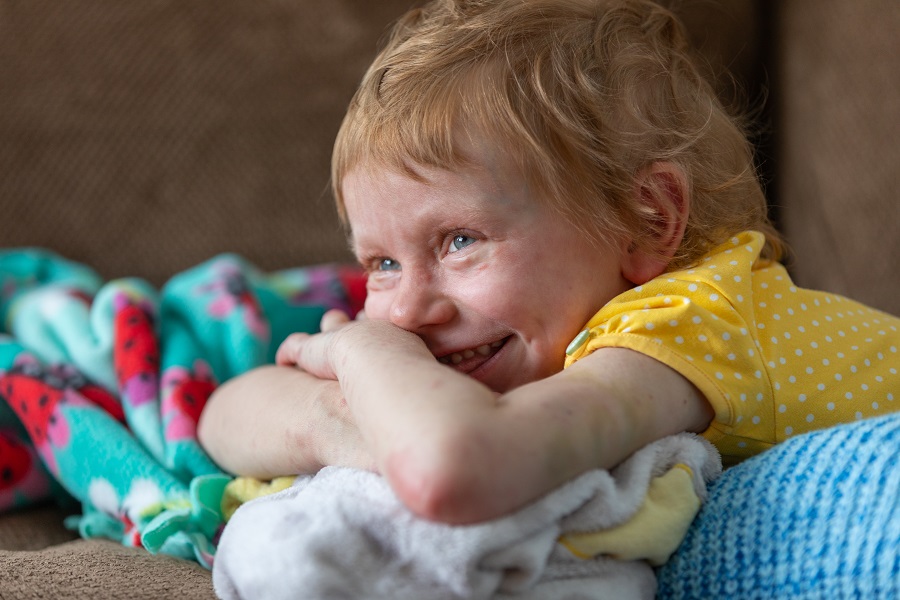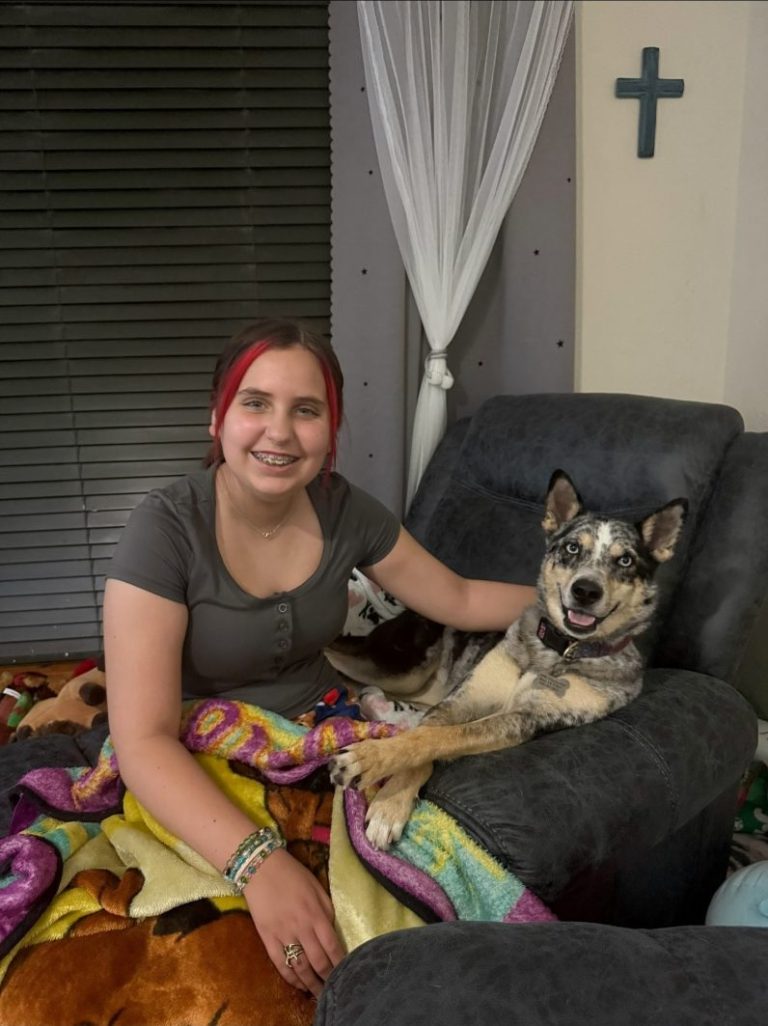Federal funders like the National Institutes of Health (NIH) are typically more interested in funding broad health concerns such as HPV or dementia, so rare childhood cancers like hepatoblastoma often do not easily make it onto the radar for research grants.
For childhood cancer researchers, less funding means less research and even fewer answers to some of the biggest questions: Why is hepatoblastoma the fastest-growing childhood cancer? And what can we do to stop it?
Though hepatoblastoma is uncommon (like most childhood cancers), the word uncommon loses its meaning for kids like Bella (above); the disease takes over their lives. According to the latest research, infants and toddlers have the highest incidence rates, and the 5-year survival rate for hepatoblastoma has plateaued at about 65 percent.
“Although hepatoblastoma research is very important to the families affected by it, sometimes NIH reviewers just do not see the need to study such a rare cancer,” said CCRF Chief Medical Advisor and researcher, Logan Spector, PhD.
Despite the lack of federal funding, CCRF-funded researchers Erin Marcotte, MPH, PhD.; Jenny Poynter, MPH, PhD; and Spector do see the importance of researching rare diseases, even if they affect only a small number of children each year. Together, the doctors have joined forces to forge ahead with enough data to study hepatoblastoma.
With the disease incidence rising 2 – 3% per year in the United States, these researchers hope to find the genetic reasons behind the disease’s rapid rise so they can start creating treatments to stop it.
Recently, the CCRF helped fund Spector and Marcotte’s work to launch the first genome-wide study for the deadly liver cancer, which includes the largest number of hepatoblastoma samples ever pooled, at 1,060 samples from kids with the cancer.
“[This] is an extraordinary number of samples for a cancer this rare,” said Marcotte. “We have obtained samples from collaborators all over the world for this project. In order to have a sufficient number for this type of project, we had to cast a very wide net.” This included samples from as far away as Germany, Australia, Italy and Spain.
To help continue building the case for more public funding for hepatoblastoma, Aubrey Hubbard, a PhD student under Dr. Poynter, studied children around the world who were under 5 years of age to understand cancer trends (including hepatoblastoma, brain tumors, leukemia and more) occurring in this age group. Their findings were recently published in the journal JNCI Cancer Spectrum, confirming that worldwide, hepatoblastoma has the largest growing incidence rate compared with other childhood cancers. In some regions, the incidence rate grows by 6.5 percent per year, though Poynter said it should not be a cause for widespread concern among parents, because the number of cases is so small.
Now that researchers have confirmed an incidence increase worldwide and have enough hepatoblastoma samples to paint an accurate picture of the genes behind it, they plan to use CCRF funding to understand why more kids are diagnosed with the fatal liver cancer.
“Discovery of novel genetic risk factors can help us understand the underlying biology and causal pathways, which may lead to improved prevention or treatment strategies in the future,” said Marcotte. “We do know that babies born at a very low birth weight (around 1 to 3 pounds at birth) have substantially increased risk of developing hepatoblastoma.”
According to previous research, children born with very low birth weight have 20 to 30 times the risk of hepatoblastoma of kids with higher birth weights. Several decades ago, most babies born that size did not survive infancy. According to Marcotte, medical innovations have allowed premature infants to survive, but that means more of them are at risk for hepatoblastoma. She thinks this may account for some of the increase in hepatoblastoma incidence, possibly along with other environmental factors. Marcotte and her colleagues are actively developing research studies to address this question.
In August 2019, they will send the hepatoblastoma genetic samples for genotyping to examine patients’ genes. And by this fall, they hope to compare each data set to see what genes are the big players making the disease fatal to children.
“Without CCRF funds, we would not have been able to conduct this important research,” said Marcotte. Poynter adds that without researching the disease, there’s not much the medical community or parents can do to prevent it, because the underlying causes are so unclear.
Thanks to donors like you, families facing hepatoblastoma like Bella’s now have forward-moving research, which will find more answers despite the lack of specific federal funding.
“We know that this research is critical for all families affected by hepatoblastoma, and we are so thankful to CCRF for its support of this work,” said Marcotte.
Support Hepatoblastoma Research
You can help researchers get the funding they need to study rare cancers, like hepatoblastoma. Make a donation today to ensure this important work moves forward for kids like Bella.




